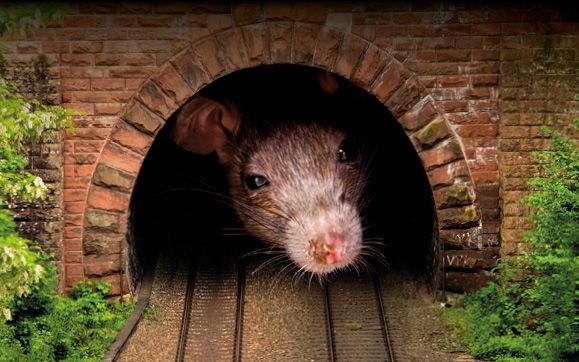There’s a Rat in the Switchgear, what are we going to do?
We associate rats with all kinds of things, from medieval plagues to gnawing their way through bins, plastic and wood, to mention just a few. They can’t see much further than about 3 or 4 feet which is why their sense of smell, touch and hearing are so finely tuned and also why they are more active in the dark.
But recently there have been several accounts of rats chomping their way through both high speed and regular railway cables. What on earth could be so tasty that they would want to chew on a length of cable when surely there are other tastier offerings track side? BASEC’s Dr Jeremy Hodge told us, “its because rats can gnaw through pretty much anything and in fact, they need to keep gnawing as their teeth grow constantly.” This, he said, means that "cables are attacked as the outer sheath layer, in particular, can provide them with nesting material.” What then results is that the inner layers of the cable are exposed to the elements, which then short out or corrode with resulting problems for rail networks.
On a more serious and preventive note, selecting the most suitable cabling for use where vermin might be present is to be recommended. Regular cable such as PVC conduit wire or flat twin and earth offers little protection against gnawing, but steel wire armoured or steel braided cable offers some protection, although the sheathing itself may be attacked. Mineral insulated cable or steel conduit affords a much better level of defence. Choosing the right cable can also considerably help the rat-proof outcome.

It is possible to include deterrent additives in the sheathing material of some cables, for example a chemical that tastes nasty to vermin, but tests have not given exceptional results and in some areas where termites are also an issue, they have proved ineffectual.
Controlling the pests themselves is an effective way to prevent or reduce further problems. You can make sure holes, cavities and voids, even the smallest, are blocked in buildings and that any source of food from waste and litter is removed. Running susceptible cables through conduits can also help, ensuring they are made of an appropriate material. A lot of this can be handled with prevention, rather than repairing after unwelcome diners visit. Some electronic devices provide ultrasonic deterrents and have also proved to be effective.
The IET Wiring Regulations BS 7671 set specific requirements for designers and contractors to assess ‘External Influences’ such as fauna (coded as AL), in Section 522.10. The normal condition (AL1) is with no vermin present. If any rats are likely, appropriate measures should be taken.
The possibility of rats gnashing their way through cables can cause all manner of failures from electrical short circuits, to fires, collisions and not to mention frustrating delays for the general public. It is unlikely we are going to declare victory over rats, mice or squirrels anytime soon, but “by remaining vigilant and adopting sensible preventive measures we can help guard our vital systems and infrastructure against their attacks.” says Dr Jeremy Hodge.
To stay up-to-date with industry stories and BASEC news, follow us on Linkedin

